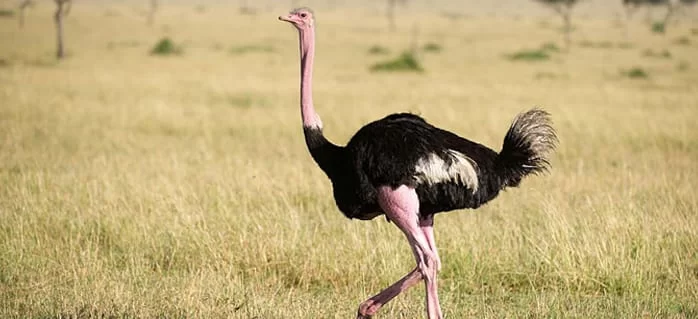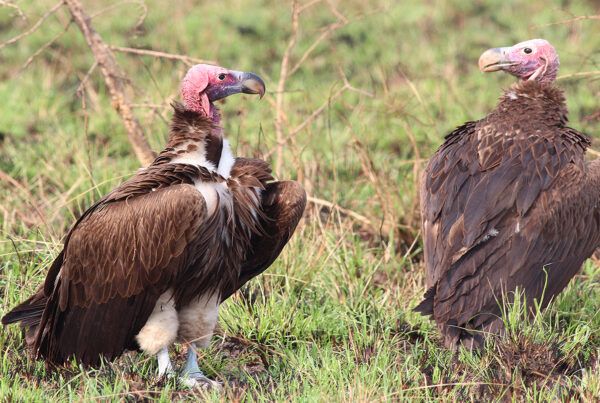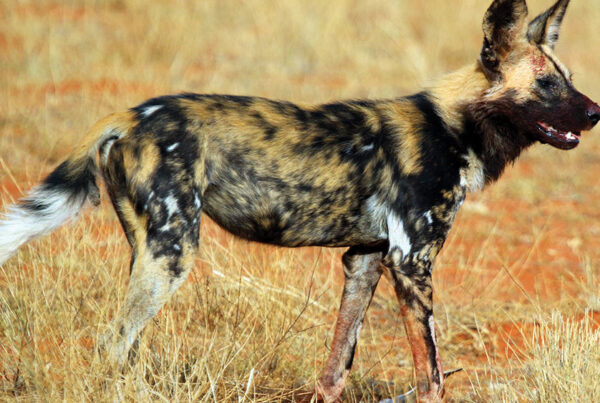Birdwatching in Kidepo: Uganda’s Remote Paradise
A Hidden Haven for Bird Enthusiasts
Nestled in the rugged northeastern corner of Uganda, Kidepo Valley National Park is widely celebrated for its dramatic landscapes and abundant wildlife, yet it is equally a sanctuary for birdwatchers seeking rare and diverse avian species. This remote wilderness, far from the bustling tourist circuits of the country, is a haven where over 475 species of birds have been recorded. From the open savannahs and riverine forests to rocky hills and acacia woodlands, the park’s varied habitats provide a unique opportunity for birdwatching in pristine conditions.
Unlike more frequented birding sites, Kidepo offers a sense of solitude and authenticity. Here, species interactions occur in their natural environment, undisturbed by human activity, allowing for a deeply immersive experience. This article explores the intricacies of birdwatching in Kidepo, highlighting the park’s habitats, key species, seasonal dynamics, conservation significance, and practical tips for travelers seeking to witness Uganda’s remote avian paradise.
Geography and Habitat Diversity: Foundations of Avian Abundance
Kidepo Valley National Park is characterized by contrasting landscapes that provide habitats for a broad range of bird species. The Narus and Kidepo Valleys are central to this diversity, featuring open plains, riverine forests, and rocky outcrops. The Narus Valley, with its expansive savannah and seasonal Narus River, supports large congregations of water-dependent species, while the Kidepo Valley’s rugged hills and Kidepo River ecosystem host forest-dwelling and cliff-nesting birds.
Acacia woodlands and riverine thickets create microhabitats where smaller passerines thrive, offering visitors opportunities to observe elusive species in quiet, shaded environments. Seasonal wetlands, ephemeral pools, and termite mounds further diversify the ecological niches, attracting waders, herons, and insectivorous birds that exploit these temporary resources. The remarkable habitat variety in Kidepo underpins the richness of its avian population, making it a premier destination for ornithologists and nature enthusiasts alike.
Bird Species Diversity: An Ornithologist’s Dream
Raptors and Birds of Prey
Kidepo’s skies are dominated by an array of raptors, including eagles, vultures, hawks, and kites. Martial eagles, the largest in Africa, patrol the plains with imposing grace, while bateleur eagles perform aerial acrobatics above open grasslands. African harrier-hawks and tawny eagles are observed hunting small mammals and reptiles, reflecting the predatory hierarchy within the park.
Vultures, both white-backed and Rüppell’s griffon, are vital scavengers, maintaining ecological balance by consuming carrion. The presence of these raptors underscores the health of Kidepo’s ecosystems, as top predators often indicate robust food chains and minimal human disturbance. Observing these species provides insight into avian behavior, hunting strategies, and ecological interdependence.
Waterbirds and Wetland Specialists
The Narus and Kidepo Rivers, along with seasonal pools, support an impressive variety of waterbirds. Herons, egrets, storks, and ibises forage along riverbanks, while African jacanas walk effortlessly across floating vegetation. Migratory species such as the common sandpiper and the grey-headed gull exploit seasonal wetlands, adding to the dynamic richness of the park’s avifauna.
Hippos, crocodiles, and other aquatic species create additional ecological niches, supporting fish-eating birds such as kingfishers, goliath herons, and African fish eagles. These interactions illustrate the complex food webs present in Kidepo and the interdependence between aquatic ecosystems and bird populations.
Savannah and Grassland Specialists
The open savannahs of the Narus Valley host species adapted to life on the plains. Ostriches, long-tailed cisticolas, and African pipits are common, while secretary birds stride confidently in search of snakes and insects. Species such as the kori bustard, one of the heaviest flying birds in the world, are occasionally observed, creating unforgettable encounters for birdwatchers and photographers.
Mixed-species flocks of weavers, larks, and hornbills navigate acacia trees and shrubs, providing opportunities to observe social behavior, foraging techniques, and vocal communication. These grassland specialists are intricately adapted to the semi-arid conditions of the region, demonstrating remarkable resilience and ecological efficiency.
Forest and Woodland Birds
Though Kidepo is dominated by savannah, patches of woodland and riparian forests provide critical habitats for forest-dwelling species. Turacos, hornbills, and various sunbirds inhabit these areas, while warblers and flycatchers exploit the dense undergrowth for insects. The diversity of habitats ensures that both novice and expert birdwatchers can encounter species that are otherwise rare or localized elsewhere in Uganda.
Forest specialists, such as the African grey hornbill, exhibit intricate nesting and foraging behaviors, highlighting the importance of microhabitats in sustaining biodiversity. Observing these species in their natural environments reinforces the value of habitat preservation and ecological management.
Seasonal Dynamics: Timing Your Birdwatching Safari
Seasonal changes profoundly affect bird activity and visibility in Kidepo. During the dry season, from December to February and June to August, water sources become focal points for congregating species. Migratory waders, waterfowl, and raptors can often be observed at rivers and waterholes, providing predictable opportunities for sightings and photography. The dry landscape also improves visibility, allowing unobstructed observation of ground-dwelling and flying birds.
In contrast, the wet season, from March to May and September to November, brings lush vegetation and ephemeral water bodies. Migratory species arrive in response to increased food availability, while resident birds disperse across the park, exploiting abundant resources. Although sightings may be less predictable, the wet season allows for the observation of breeding behavior, fledglings, and courtship displays, offering a unique perspective on avian life cycles.
Migration and Rare Species
Kidepo’s remoteness and diverse habitats make it an important site for migratory species. European and Asian migrants pass through during specific periods, including waders, raptors, and passerines. These migrations create peaks in biodiversity, drawing birdwatchers eager to document rare or unusual species.
Locally restricted species, such as the Archer’s lark and the Heuglin’s masked weaver, are also observed, adding to the park’s ornithological significance. The combination of migratory influx and endemic populations ensures that every visit to Kidepo offers novel birdwatching opportunities, making it an essential destination for serious birders.
Photography and Observation Techniques
Birdwatching in Kidepo requires patience, observation, and appropriate equipment. Binoculars, spotting scopes, and cameras with telephoto lenses are indispensable for capturing distant or fast-moving species. The open plains of Narus allow for unobstructed photography of large raptors and ground-dwelling birds, while woodland areas require careful tracking and stealth to avoid disturbing sensitive species.
Early morning and late afternoon are optimal for observation, as birds are most active during cooler parts of the day. Guides provide invaluable assistance, pointing out elusive species, identifying calls, and suggesting vantage points for photography. Knowledge of bird behavior, seasonal patterns, and habitat preferences enhances the quality of observation and ensures that experiences are both educational and rewarding.
Ecological and Conservation Significance
Birdwatching in Kidepo is more than a recreational activity; it is an entry point into understanding ecological health and conservation priorities. The diversity of avian species reflects the integrity of habitats, the availability of food and water, and the effectiveness of anti-poaching and habitat management efforts. Raptors, waterbirds, and woodland species serve as ecological indicators, signaling the overall condition of the park’s ecosystems.
Conservation efforts in Kidepo, including habitat protection, anti-poaching patrols, and community engagement, have allowed avian populations to thrive despite the region’s remoteness and challenging conditions. Birdwatchers, by observing and documenting species, contribute indirectly to awareness and support for these conservation initiatives, reinforcing the connection between tourism and environmental stewardship.
Practical Tips for Birdwatching in Kidepo
Preparation is essential for a successful birdwatching safari. Visitors are advised to bring field guides, binoculars, and cameras, and to wear neutral-colored clothing to blend with the environment. Patience and quiet observation are critical, as many species are shy or highly mobile.
Engagement with experienced local guides enhances both the educational and ethical dimensions of birdwatching. Guides provide insights into species identification, ecological roles, and conservation challenges, ensuring that travelers gain a holistic understanding of the park’s avian diversity. Adequate hydration, sun protection, and navigation awareness are also essential, given Kidepo’s remote location and semi-arid climate.
Combining Birdwatching with Safari Highlights
While Kidepo is renowned for its bird diversity, its larger wildlife populations provide additional context and excitement. Observing elephants, lions, buffaloes, and antelopes alongside bird activity illustrates the interconnectedness of the ecosystem. Raptors often hunt in response to prey movement, waterbirds interact with mammals along riverbanks, and forest species benefit from insect populations maintained by herbivore activity. This combination of avian and terrestrial wildlife enhances the educational and aesthetic value of every safari day.
Walking safaris, game drives, and river excursions can be timed to maximize both bird and mammal encounters, allowing travelers to experience the full ecological tapestry of the park. These multi-layered experiences transform birdwatching from a niche pursuit into an immersive exploration of Uganda’s wild northeast.
Uganda’s Remote Birding Paradise
Kidepo Valley National Park is a remote paradise for birdwatchers, offering unparalleled opportunities to observe, photograph, and study avian species in unspoiled habitats. From majestic raptors and elegant waterbirds to colorful passerines and elusive woodland species, the park’s avian diversity is extraordinary. Seasonal changes, habitat variety, and conservation success make Kidepo a dynamic and continually rewarding destination for both casual birders and serious ornithologists.
For travelers seeking an immersive, educational, and unforgettable birdwatching experience, the expertise of professional safari operators is invaluable. To explore Kidepo’s remote birding paradise with knowledgeable guides, seamless logistics, and ethical wildlife engagement, book your Africa tours and safaris with WildHorn Africa, ensuring an expertly curated journey into one of Uganda’s most spectacular and isolated wilderness areas.





 WildHorn Africa – Authentic and unforgettable tours across Africa, guided by local experts who know the land, wildlife, and culture best.
WildHorn Africa – Authentic and unforgettable tours across Africa, guided by local experts who know the land, wildlife, and culture best.


